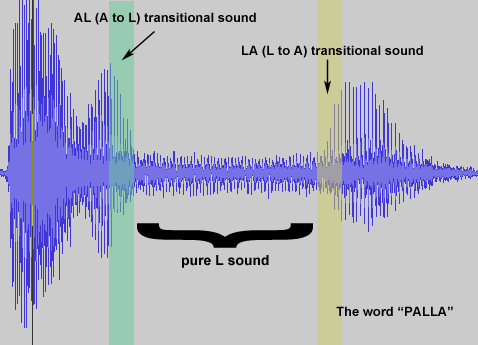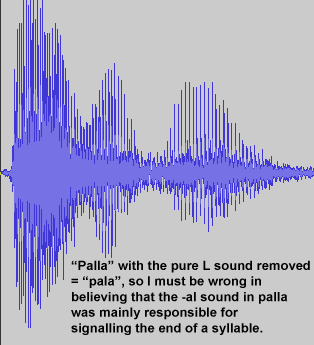
This page is related to this discussion thread: http://www.textkit.com/greek-latin-forum/viewtopic.php?f=3&t=61289&p=162461#p162461
Use the audio controller to listen to this MP3 file.
Here's the word "palla" from this source: https://www.youtube.com/watch?v=V-r_l5vgBoY in which you can see the sounds of the two syllables.

Use the audio controller to listen to this MP3 file.
In speech synthesis, the use of diphones sounds more natural than phonemes because letter sounds are influenced by neighbouring letter sounds in articulation, plus a consonant at the end of a syllable sounds different from the consonant at the beginning of a syllable in its volume and frequency profile. The l in the syllable al sounds different from the l in syllable la. You can hear the difference. Its subtle but real. And you can see the difference in the speech profile of the word "palla" in the recording above, spoken by a native Italian. There are these sounds p-pa-a-al-l-la-a, and the l in al doesn't sound like the l in la: it contains audible signs of belonging to a different syllable. You might think its just a long l but you hear 2 types of l: the first says "I'm the letter l and I belong to the first syllable" and the second says "I'm another letter l and I belong to the second syllable" and together they say "of course, we join together in a continuous sound, the l sound, but you can hear we are distinct letters and not just a long l."
I looked at this more, did this experiment hoping to provide evidence in support of my thought, and, as a result, I see that I was wrong, and the -al transitional sound is just the same as the -a l- transitional sound in "pala" so the "-al" sound in palla doesn't bear a signal for an end of a syllable and only the protracted pure l sound is significant.

